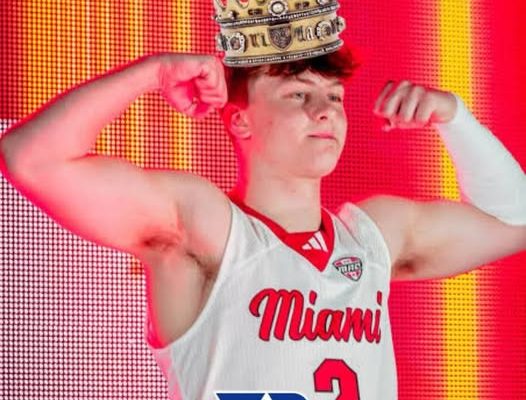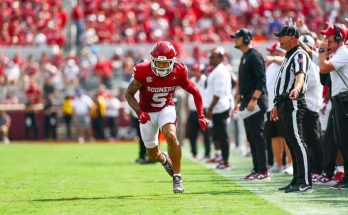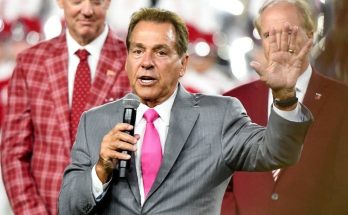In the world of college basketball recruiting, few moments generate as much anticipation, discussion, and outright excitement as the announcement of the nation’s No.1 player’s college commitment. Every year, analysts, fans, and rival programs follow the recruiting trail with a level of intensity that rivals any professional sports draft. The arrival of a top-tier talent to a college roster can redefine the trajectory of a program for years to come, shaping not only the team’s competitive landscape but also its recruiting footprint and national brand. This year, all eyes are on a player who has been the focus of intense speculation for months, and the college basketball world is buzzing with anticipation as the announcement approaches. Sources close to the player and the coaching staff suggest that the decision will have monumental implications for Duke University’s Blue Devils, Kentucky’s Wildcats, and Alabama’s Crimson Tide, among others, each of whom have aggressively pursued the prized recruit with fervor.
The top-ranked player in the country represents the pinnacle of basketball talent at the high school level, often displaying a combination of physical prowess, technical skill, and basketball IQ that sets them apart from their peers. Recruiting services, analysts, and college coaches alike meticulously evaluate the metrics that define this elite class of athletes: scoring efficiency, versatility on both ends of the floor, defensive instincts, leadership qualities, and the ability to perform under pressure. The player in question embodies all of these traits in abundance, making them an ideal candidate to make an immediate impact at the collegiate level. Reports indicate that their game is remarkably well-rounded, combining explosive athleticism with refined fundamentals—a rare combination that promises to translate seamlessly to the high-octane world of NCAA basketball.
Over the past year, the pursuit of this No.1 prospect has evolved into a high-stakes competition among some of the nation’s most storied programs. Duke University, under the leadership of its head coach, has been relentless in courting the young star, presenting a compelling vision of how the player would fit into the Blue Devils’ system. Duke’s program boasts a long history of developing top-level talent and preparing players for professional careers, a factor that weighs heavily in the decision-making process of elite recruits. The promise of exposure in nationally televised games, mentorship under a celebrated coaching staff, and the chance to leave a lasting legacy at a program synonymous with excellence creates a powerful allure that few institutions can rival. Conversations with insiders suggest that Duke has laid out a clear roadmap for how the player would contribute immediately while also honing skills that would be critical for a future professional career, making their pitch both strategic and highly appealing.
Meanwhile, Kentucky has also made a vigorous push, leveraging its own legendary history of producing NBA talent and high-profile athletes. The Wildcats’ head coach has emphasized the program’s unparalleled track record of success, highlighting multiple Final Four appearances and a culture steeped in tradition and competitiveness. Kentucky’s appeal lies in its combination of elite coaching, high visibility, and the opportunity to compete at the highest level of college basketball almost immediately. The coaching staff has reportedly engaged in multiple one-on-one sessions with the player, their family, and advisors, seeking to demonstrate not only the on-court fit but also the off-court support system that the program offers. Kentucky’s commitment to player development, both athletically and academically, has long been a selling point, and this particular recruit is said to be considering the program’s comprehensive approach very seriously. Analysts suggest that Kentucky’s ability to provide a platform for immediate stardom and exposure to professional scouts remains a formidable draw in the recruiting battle.
Alabama, too, has emerged as a significant contender, signaling a broader shift in the landscape of elite college basketball recruiting. Historically known as a football powerhouse, the Crimson Tide have made remarkable strides in basketball, combining strong recruitment, player development, and a rising national profile. The coaching staff has invested substantial resources into wooing top-tier talent, emphasizing Alabama’s state-of-the-art facilities, rigorous training programs, and a culture of competitiveness that mirrors professional environments. The program’s recent successes and increasing national visibility are part of the pitch, as Alabama seeks to prove that it is no longer solely a destination for football but a premier destination for elite basketball talent as well. Reports indicate that Alabama’s staff has highlighted the unique opportunity for the player to make an immediate and transformative impact on the program, framing the commitment not merely as joining a team but as spearheading a new era in Crimson Tide basketball.
As the announcement date approaches, the dynamics surrounding the decision have captivated fans and media alike. Social media has become a virtual war zone of speculation, with supporters of each program sharing videos, graphics, and posts that attempt to sway the young athlete’s choice. Analysts dissect every public statement, every photograph, and every visit to attempt to forecast the outcome, often sparking heated debates among enthusiasts and experts. The intensity surrounding the recruitment underscores not just the player’s talent, but the cultural significance of top-tier college basketball in America. The player’s eventual commitment is expected to shift recruiting momentum, influence other prospective recruits, and potentially alter the competitive balance between perennial powerhouses for years to come. In many ways, the announcement represents more than a single player’s choice; it symbolizes the ongoing tug-of-war between elite programs, the evolving strategies in player recruitment, and the immense value placed on high-caliber talent.
Recruiting top-ranked players is rarely a straightforward process. Factors such as playing style, coaching philosophy, geographic proximity, family considerations, and future professional aspirations all weigh heavily in the final decision. For this No.1 recruit, the process has included multiple official visits, private meetings with coaching staffs, extensive evaluation of program fit, and discussions with mentors who have guided them throughout their high school career. The decision is further complicated by the pressure of public attention, as every social media post and every public comment is scrutinized for hints about the player’s inclination. Despite the intense scrutiny, sources close to the athlete emphasize that the decision is ultimately rooted in personal fit and long-term career goals rather than external pressures or fan expectations. This approach reflects a broader trend in elite recruiting, where players are increasingly prioritizing developmental opportunities, coaching relationships, and cultural fit over legacy or popularity.
The timing of the announcement also plays a critical role in the college basketball landscape. Programs often time their pitch to coincide with pivotal events, such as national tournaments, spring showcases, or key recruiting weekends, to maximize exposure and momentum. In this case, the timing appears carefully calculated to generate maximum impact, creating a crescendo of anticipation that ensures the announcement will dominate sports headlines, social media platforms, and basketball discourse for days, if not weeks. For Duke, a commitment from the nation’s top player would reinforce the program’s reputation as the destination for elite talent and could serve as a catalyst for additional high-profile recruits. For Kentucky and Alabama, securing the player would similarly validate recruiting strategies, enhance national visibility, and potentially reshape competitive dynamics within their respective conferences.
Beyond the immediate excitement, the commitment of a No.1 player carries profound implications for team composition and strategy. A player of this caliber is expected to assume a leadership role almost immediately, influencing rotations, defensive schemes, offensive priorities, and overall team culture. Coaching staffs invest significant resources in integrating such players into existing systems, often tailoring playbooks to leverage their unique skill sets while fostering team cohesion. Teammates must adapt to accommodate the arrival of a high-profile recruit, balancing the excitement of their talent with the need for team chemistry. The ripple effects extend to future recruiting classes, as prospective athletes are drawn to programs where elite talent thrives, further reinforcing the cycle of success. In this context, the No.1 player is not just a participant but a transformative figure whose presence reverberates across multiple dimensions of the program.
From a broader perspective, the announcement serves as a microcosm of college basketball’s highly competitive recruiting ecosystem. It highlights the convergence of talent evaluation, strategic positioning, program branding, and athlete development that defines elite-level recruitment. The race for the nation’s top player underscores the importance of institutional vision, coaching acumen, and the ability to communicate a compelling narrative that resonates with recruits and their families. It also reflects the evolving priorities of elite players, who increasingly weigh factors such as professional readiness, holistic support systems, and opportunities for national exposure alongside traditional metrics such as winning tradition and conference prestige. The strategic interplay between these variables creates a fascinating tableau that captures the imagination of fans, analysts, and media alike.
As the basketball world eagerly awaits the announcement, speculation remains rampant. Some insiders hint that Duke’s historical track record and developmental pedigree give it an edge, while others point to Kentucky’s immediate visibility and professional pathways as equally compelling. Alabama’s emergence as a legitimate contender introduces a wildcard element, demonstrating the fluidity and unpredictability inherent in recruiting at this level. Regardless of the outcome, the announcement is poised to reverberate far beyond the immediate circle of programs involved. It will influence discussions in media rooms, pundit panels, fan forums, and social media feeds, shaping narratives about program strength, recruiting efficacy, and future competitive balance.
Ultimately, the commitment of the nation’s No.1 player represents a pivotal moment not just for the athlete but for the institutions vying for their talents. Duke, Kentucky, Alabama, and other interested programs are all engaged in a high-stakes game where strategic vision, persuasive communication, and the ability to foster trust and confidence are critical determinants of success. The player’s decision will signal the direction of their collegiate career, define the immediate fortunes of the program they join, and influence the trajectory of college basketball at the highest levels. Fans and analysts alike will scrutinize every angle, seeking to understand the rationale behind the choice, the implications for team dynamics, and the potential for championship success.



